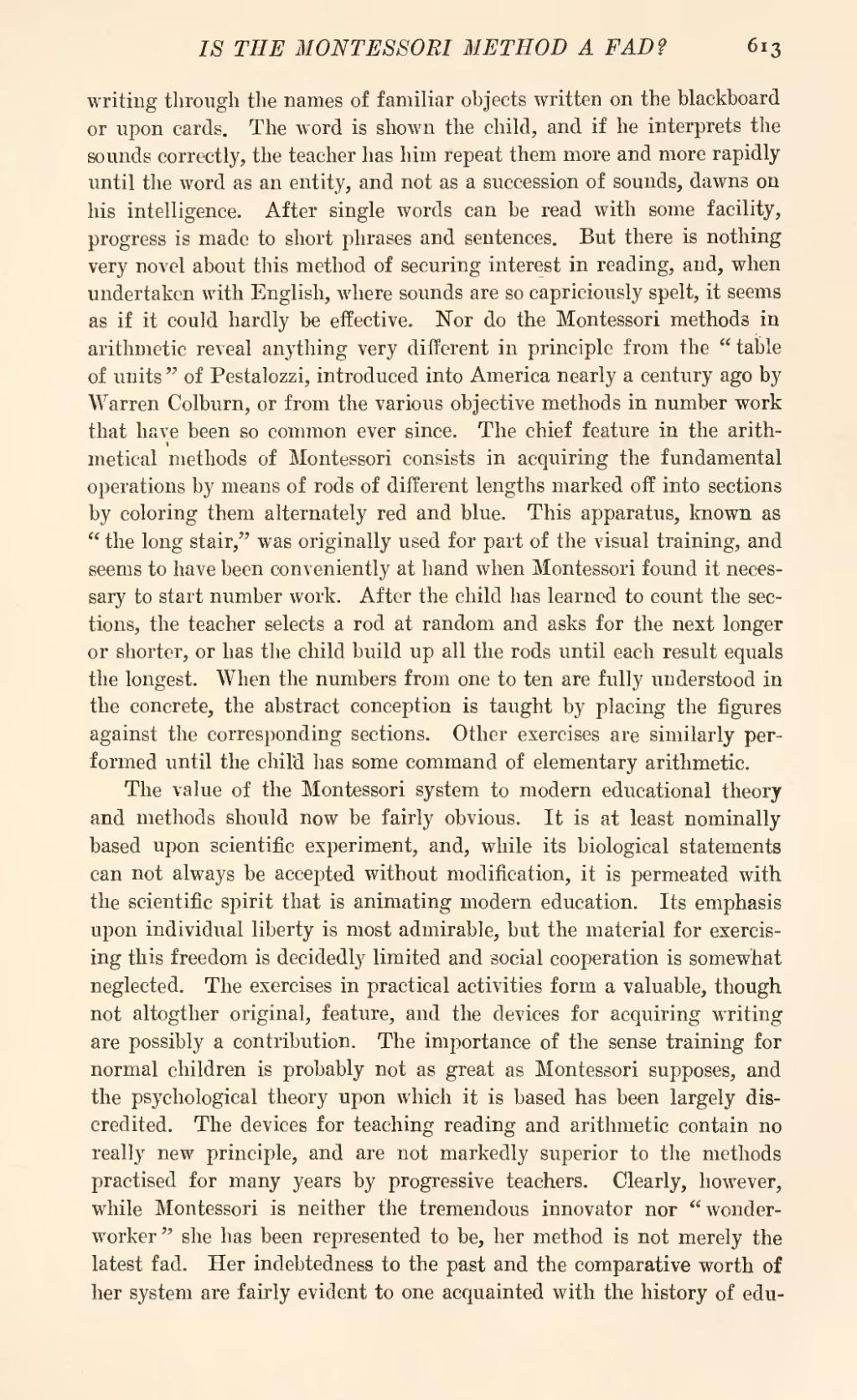writing through the names of familiar objects written on the blackboard or upon cards. The word is shown the child, and if he interprets the sounds correctly, the teacher has him repeat them more and more rapidly until the word as an entity, and not as a succession of sounds, dawns on his intelligence. After single words can be read with some facility, progress is made to short phrases and sentences. But there is nothing very novel about this method of securing interest in reading, and, when undertaken with English, where sounds are so capriciously spelt, it seems as if it could hardly be effective. Nor do the Montessori methods in arithmetic reveal anything very different in principle from the "table of units" of Pestalozzi, introduced into America nearly a century ago by Warren Colburn, or from the various objective methods in number work that have been so common ever since. The chief feature in the arithmetical methods of Montessori consists in acquiring the fundamental operations by means of rods of different lengths marked off into sections by coloring them alternately red and blue. This apparatus, known as "the long stair," was originally used for part of the visual training, and seems to have been conveniently at hand when Montessori found it necessary to start number work. After the child has learned to count the sections, the teacher selects a rod at random and asks for the next longer or shorter, or has the child build up all the rods until each result equals the longest. When the numbers from one to ten are fully understood in the concrete, the abstract conception is taught by placing the figures against the corresponding sections. Other exercises are similarly performed until the child has some command of elementary arithmetic.
The value of the Montessori system to modern educational theory and methods should now be fairly obvious. It is at least nominally based upon scientific experiment, and, while its biological statements can not always be accepted without modification, it is permeated with the scientific spirit that is animating modern education. Its emphasis upon individual liberty is most admirable, but the material for exercising this freedom is decidedly limited and social cooperation is somewhat neglected. The exercises in practical activities form a valuable, though not altogther original, feature, and the devices for acquiring writing are possibly a contribution. The importance of the sense training for normal children is probably not as great as Montessori supposes, and the psychological theory upon which it is based has been largely discredited. The devices for teaching reading and arithmetic contain no really new principle, and are not markedly superior to the methods practised for many years by progressive teachers. Clearly, however, while Montessori is neither the tremendous innovator nor "wonder-worker" she has been represented to be, her method is not merely the latest fad. Her indebtedness to the past and the comparative worth of her system are fairly evident to one acquainted with the history of edu-

